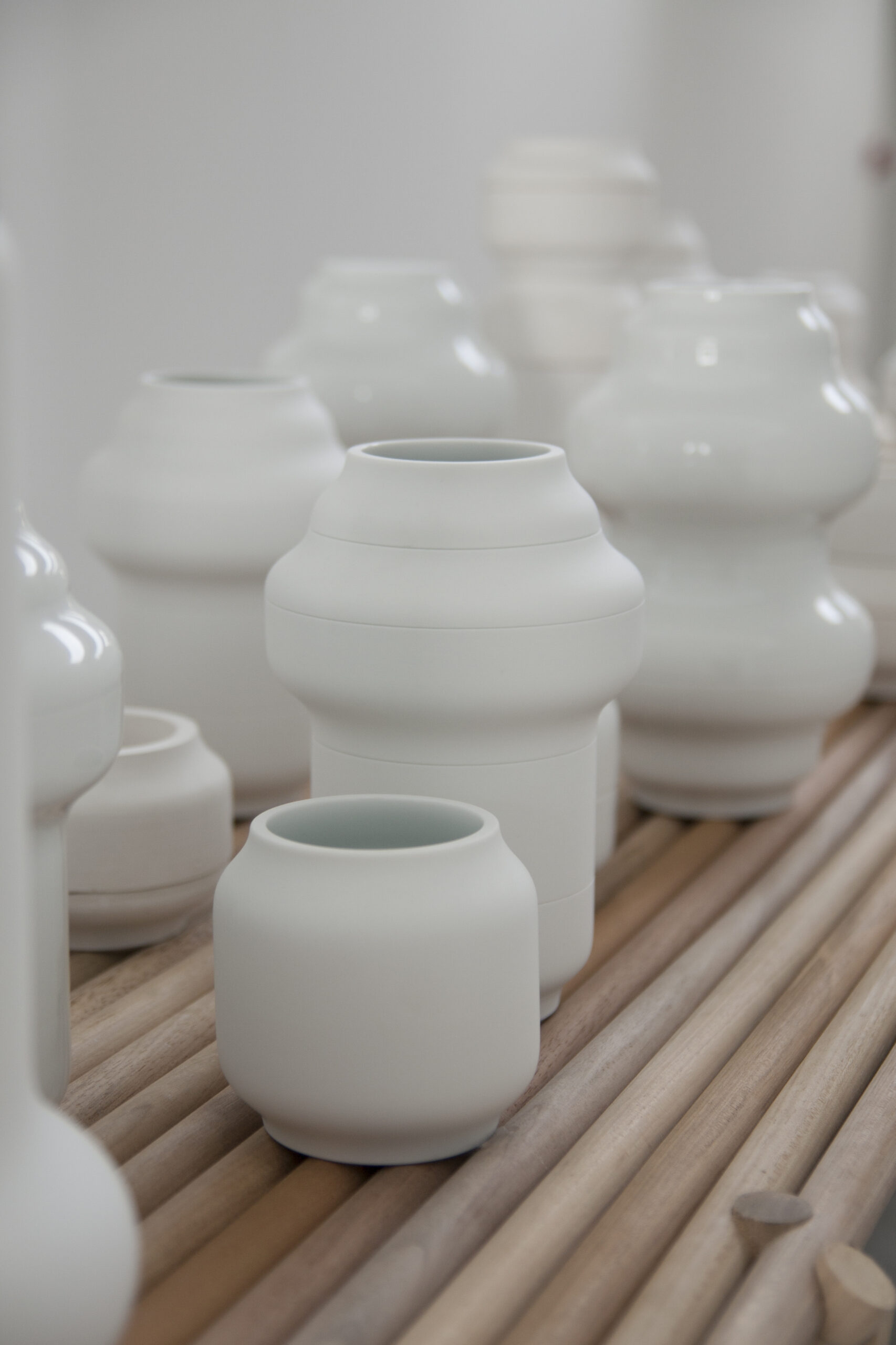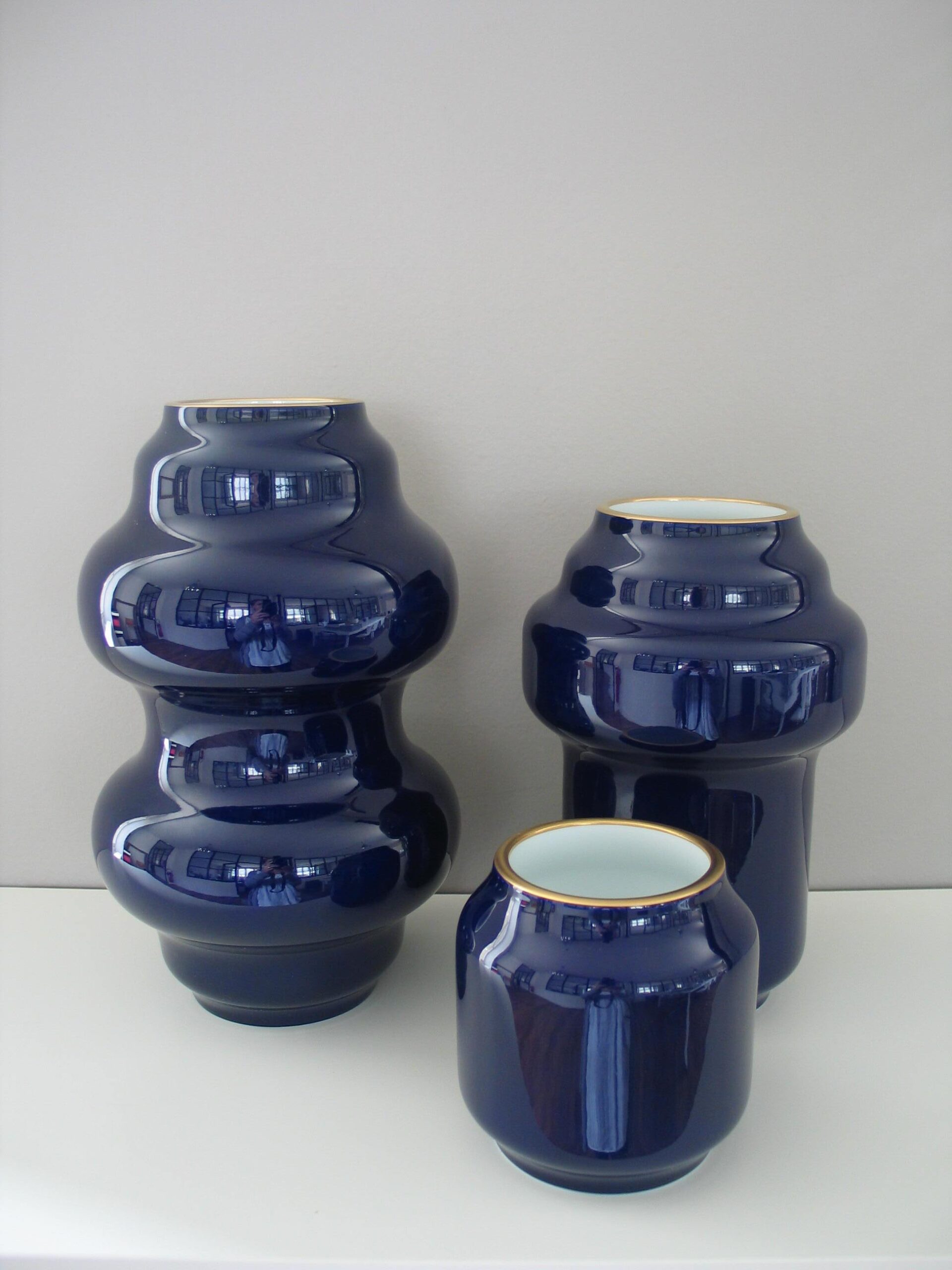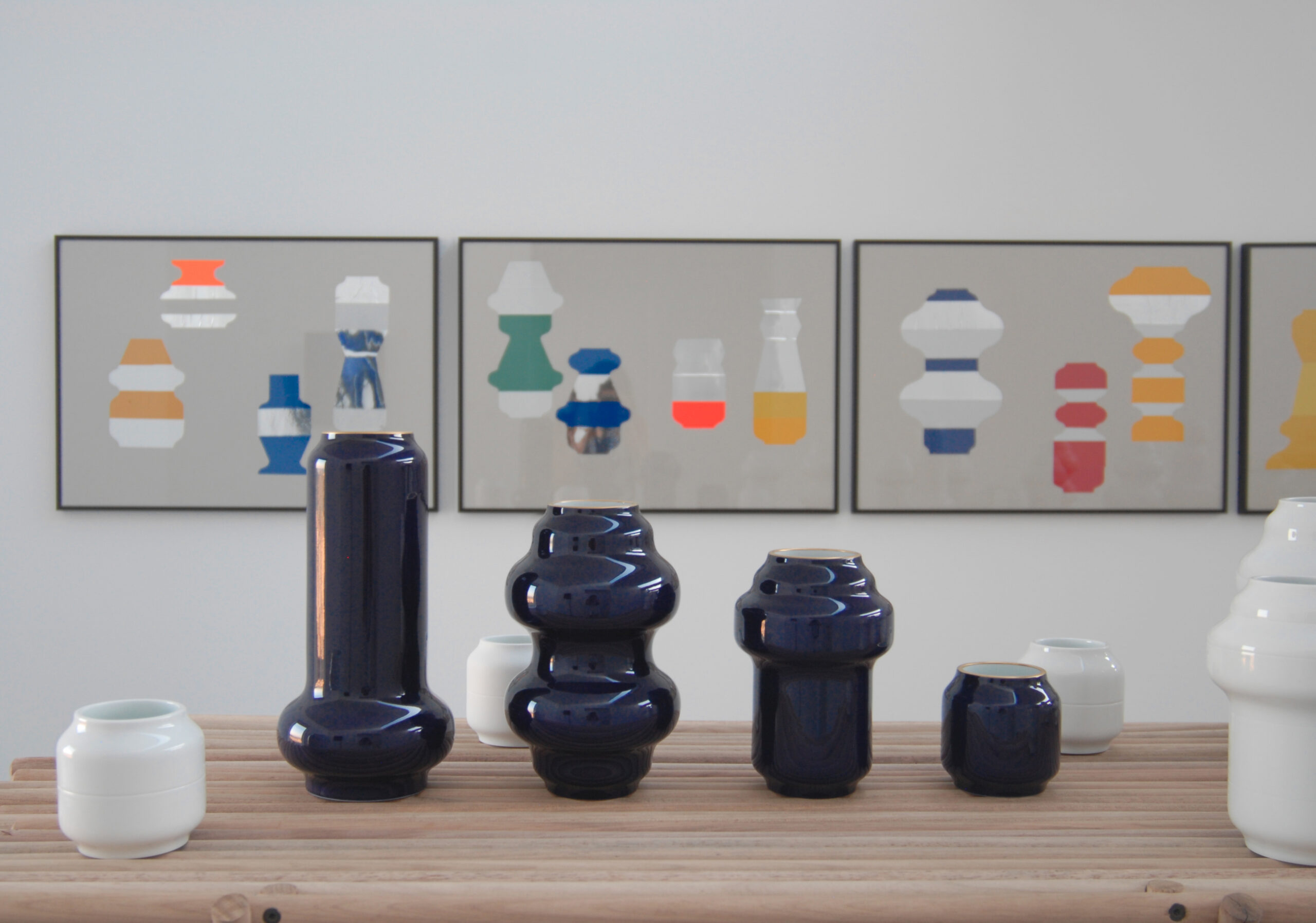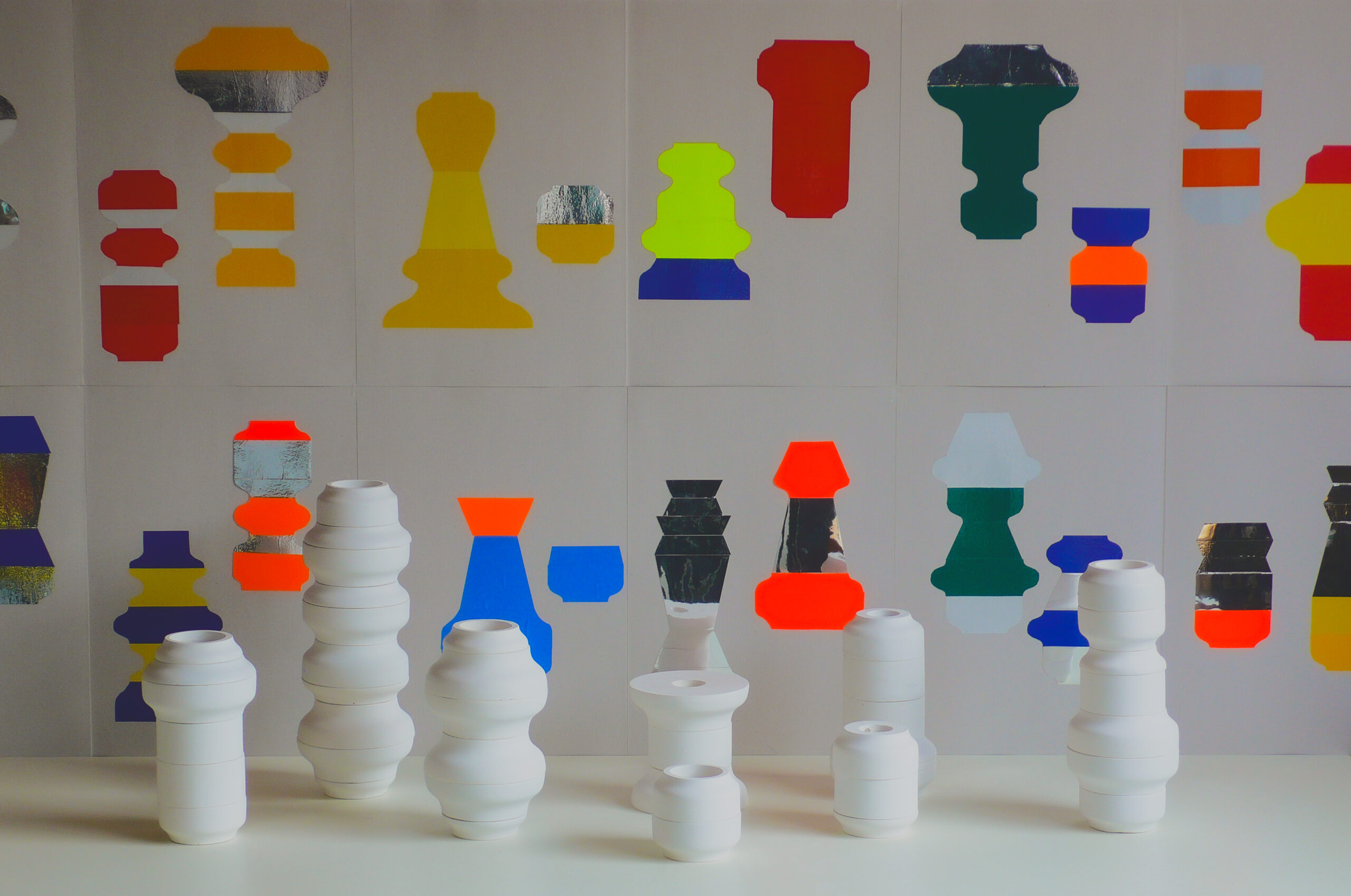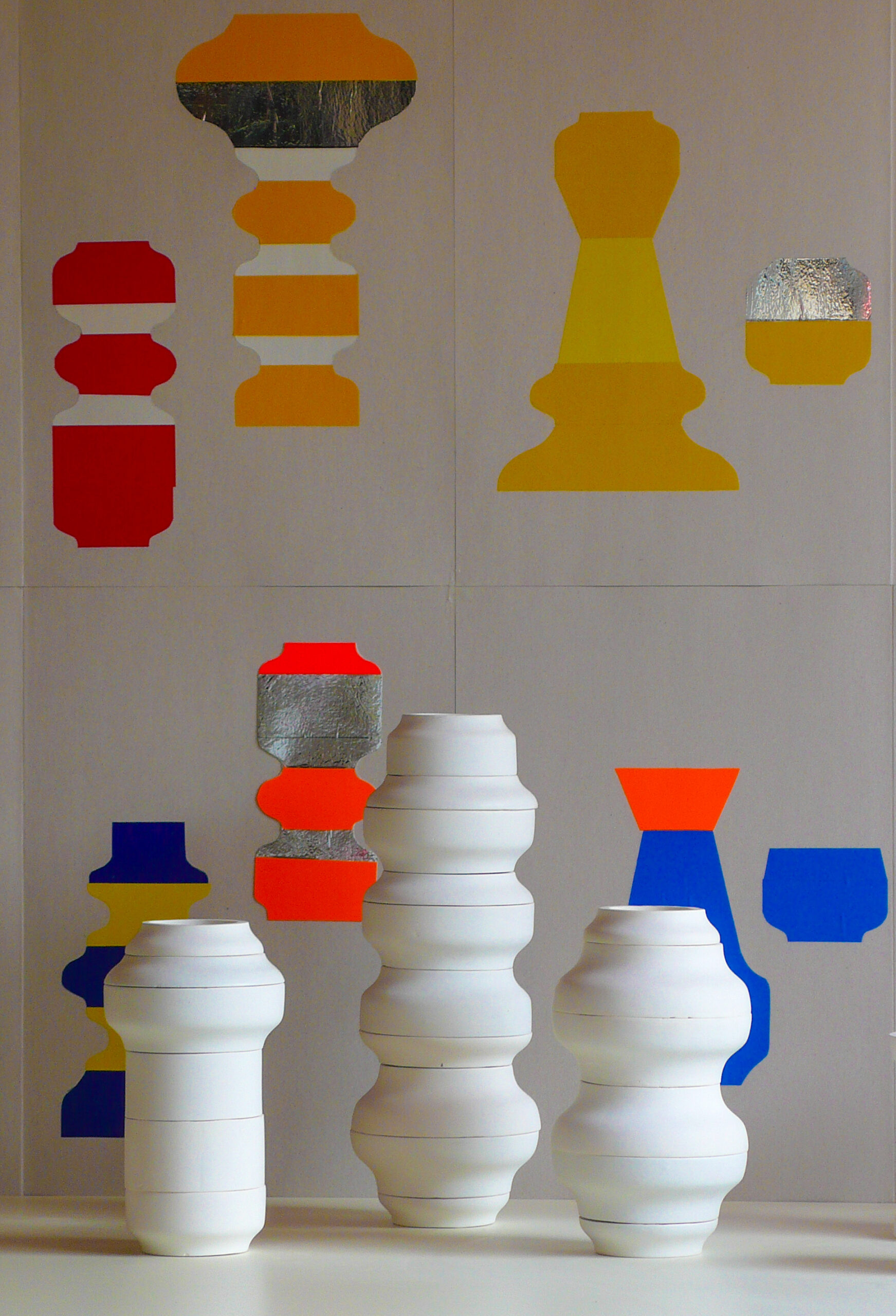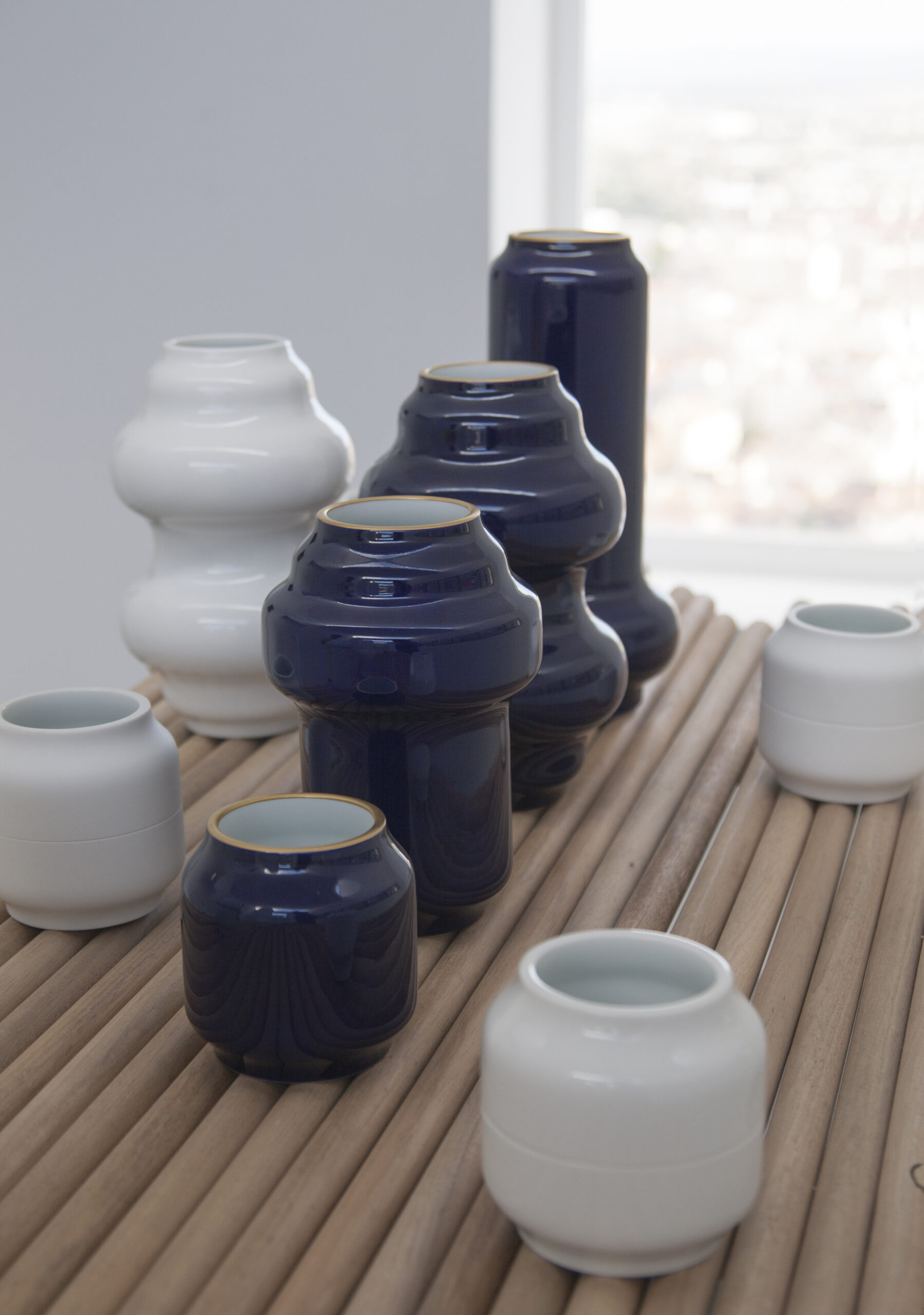Following his award of the Design Parade’s young designer contest from the Villa Noailles in Hyères (France) in 2010, François Dumas earned a residency at Sèvres Cité de la Céramique, Paris.
The Manufacture nationale needed to have their classic Clermont vase revisited, which had been for a long time the presidential gift of the Élisée. Sèvres asked him to create new forms of vase intended to become part of their heritage. Fascinated in the ceramic mould casting, Dumas conducted his research in order to make a vase collection that could be produced from a mould set whose shapes could interlock with each other. Different sections of moulds, when combined together in different ways, would offer a vast range of forms. The experiment was made with collages and plaster models with the concern to draw not only compatible but also harmonious shapes.
The Superimposed Vases are manufactured in new-paste porcelain with high-fire enamels in Bleu de Sèvres with gold rims or in white biscuit porcelain.
The vases are part of the current collection of Sèvres Cité de la Céramique, and are also used as blank canvas for other artists invited to Sèvres.
